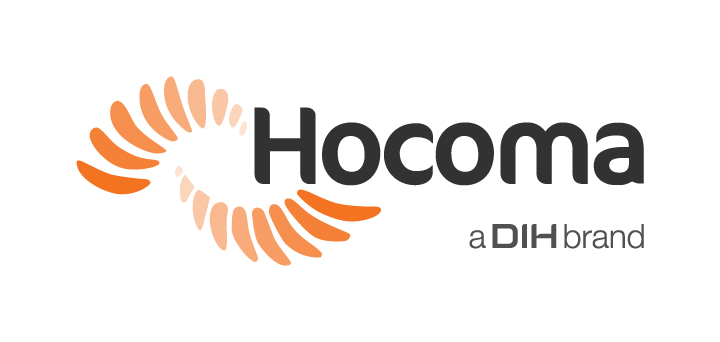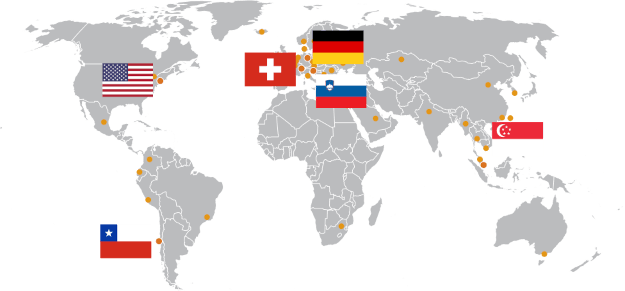May 5, 2019
Clinical Integration of the C-Mill VR for Neurological & Musculoskeletal Patients

Ilse Bosmans, Physiotherapist
Rehabilitation and MS Center, Overpelt, Belgium
Rehabilitation and MS center is an inpatient and outpatient clinic specialized in patients with Multiple Sclerosis (MS), but also patients with other disorders of the nervous system and musculoskeletal system who need intensive neurological and/or locomotor rehabilitation. In addition, the center is acknowledged as an expertise center for coma patients.
We already have a C-Mill VR since 2006, but it has been upgraded to the latest standards in 2017, including a Body Weight Support system. The C-Mill VR adds a value to the rehabilitation of our patients. It is a fun way of working, both for patients and therapists.
Here we describe our clinical setting and hope that it serves as an example to support other clinics that also work with the C-Mill VR .
Patient Group
Our main pathologies are patients with MS, stroke, Parkinson, Guillain-Barré, total hip and knee replacements, amputations, spinal cord injuries and poly traumatic patients. In addition, we offer a stimulation program for coma patients. We have approximately 120 hospitalized patients and 150 ambulatory patients, which corresponds to an average of 15 to 16 patients per therapist per day. The C-Mill VR is located in the therapy room, which is a nicely separated room with a very large window. As a result all patients have the opportunity to view what is being practiced on the C-Mill VR. The area can be closed as well, sometimes needed to increase the patient’s concentration, the light can be dimmed without disturbing other rehabilitation patients and in this room there is no passage which makes this area a bit quieter. The C-Mill is used for gait and balance training. We use different forms of training based on the pathological condition of the patient. In general, we notice that the weight shifting and balance training applications are most commonly used. Gait analysis is mainly used in the better patients to provide feedback on their walking ability. For patients who cannot bear full body weight the body weight system is used to practice safely. We also have an Erigo to verticalize patients at an early stage of their rehabilitation, which gives a reduced chance of orthostatic hypotension while the legs are actively mobilized and practiced with stepping experience.
Prescription: Inclusion Criteria
Our therapists estimate the possibilities of the patient and depending on the treatment objectives the C-Mill VR is being scheduled or not.
Duration and Frequency of Sessions
The C-Mill VR is used very often during the day. The number of patients often varies between 15 and 20 patients per day. The C-Mill VR training duration is between 15 and 30 minutes.
Patient Evaluation
We use the weight distribution assessment and the gait analysis for our patients. We also use the training applications to evaluate the patients’ walking ability. For example, the Stepping stones can be adjusted in step length and step width during walking, to normalize the gait of patients with a leg prosthesis or MS. Another possibility is to use a cognitive test in combination with stepping or balance exercises on the C-Mill VR.

In addition, obstacles and accelerations can be used to evaluate the patients ability as well. This form of evaluation in an observational manner is also important for us. The gait analysis outcome that we use is e.g. unipedal stance duration, step length and the butterfly. We also like to provide a patient with visual feedback via the video module while walking. The weight distribution outcome is used for amputee patients to show the amount of weight shifting towards the affected leg. We use the results to set treatment goals, also for therapy that does not take place on the C-Mill VR. Later we can re-assess the patient on the C-Mill VR to see if the patient improved his gait pattern. Progression measurements are used very frequently, since it is easy to monitor the patient by comparing different results. Most parameters can be selected and set against each other, which is an absolute added value of the C-Mill VR.
What are the Main Reasons to Include Motek Technology as Part of the Therapy?
The C-Mill VR certainly provides added value in various aspects of our rehabilitation. First of all, the C-Mill VR starts at a slower speed than a traditional treadmill. The C-Mill VR is embedded in the ground in our center, which provides greater accessibility for the patients, as well as access for the wheelchair. The C-Mill VR provides us a very pleasant interactive way of achieving goal oriented therapy for patients. In addition, we are able to improve the patient’s walking subconsciously by adjusting certain training options or by being able to respond directly to the patient’s weaknesses. You can easily compare results of the assessments, but also the results of training. We notice very good results in subconsciously adjusting the gait pattern, for example, by letting the patients stepping on the stones. Patients concentrate on the stepping stones and are not aware of the changed gait pattern. Finally, the body weight system is an added value to practice safely with patients who cannot bear full body weight. Patients are certainly aware of the added value of the C-Mill VR as well. If you discuss the results of the assessments with the patients, you can use the graphs to explain more easily what is correct and what can be improved. It is easier to show their progress with graphs and it encourages patients to do the next assessments even better. The size of the treadmill is also a big plus, patients feel more safe and comfortable here than on a traditional, small treadmill.
Other Additional Therapies Provided
- Nintendo Wii and Kinect: higher rehabilitation level for patients.
- Balance trainer & balance master: balance training with or without support and visual feedback.
- Myro and ReJoyce: training of the upper extremities.
- Hydrotherapy for in- and outpatients
- Cardiopulmonary performance test
Organization: Responsible Team
We are with 26 physiotherapists and 12 occupational therapists in our center. About 80 to 90% of the therapists make use of the C-Mill VR. A few therapists serve as the main contact point in case of any questions from other therapists and they regularly provide internal education training.

We mainly work with specialized therapists in neurological rehabilitation, musculoskeletal or locomotor rehabilitation. Furthermore, all therapists are encouraged to continue their education through external and internal training. Our center works together with an orthopedic surgeon to ensure efficient treatment of the patient after an amputation and learn to walk again with a prosthesis. We do not make use of central therapy scheduling for the C-Mill VR.
Billing and Financial Reimbursement of the Therapy
We used the C-Mill VR gait analysis already several times to request reimbursement for patients by providing the most comprehensive assessment as possible to the insurance company.
This clinical experience report is meant to serve as an example of how the C-Mill VR is integrated into one particular rehabilitation center. It is not necessarily a standard recommendation from Hocoma.




